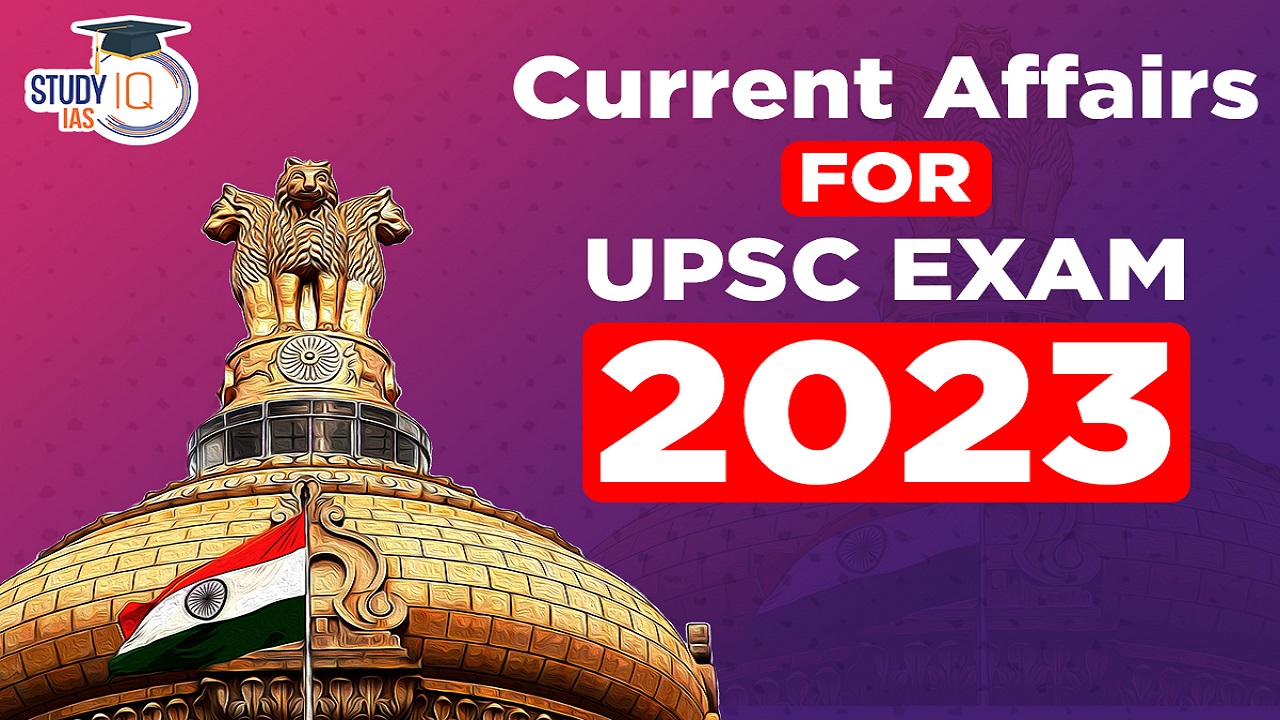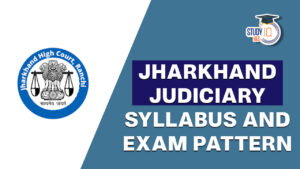Current Affairs 31st July 2023 for UPSC Prelims Exam
RBI’s Digital Payments Index
Context: The Reserve Bank of India (RBI)’s Digital Payments Index rose by 13.2% to 395.57 in March 2023 from 349.30 in March 2022.
About the RBI’s Digital Payments Index
- The RBI introduced the composite Digital Payments Index (RBI-DPI) in January 2021 with March 2018 as the base, to capture digitization of payments.
- The index has since been steadily rising, crossing the 300-point mark in September 2021.
- Methodology of the index: The RBI-DPI comprises five parameters to measure the deepening and penetration of digital payments. Of these parameters –
- payment enablers account for 25 per cent of the index,
- payment infrastructure – demand-side factors for 10 per cent,
- payment infrastructure – supply-side factors for 15 per cent,
- payment performance for 45 per cent,
- whereas consumer centricity holds five per cent weightage.

Key highlights of the latest RBI-DPI Index
- The RBI-DPI index has increased across all parameters driven by significant growth in payment infrastructure and payment performance across the country over the period (March22-March23).
- The increase in Index highlights the remarkable surge in digital payment adoption in India, predominantly propelled by the success of UPI.
Key Stats IQ on India’s Digital Payment Ecosystem
- As per the Economic Survey 2022-23, India has the highest fintech adoption rate of 87 per cent among the public compared to the global average of 64 per cent.
- Further, India has gained the third place in digital payments, coming only after US and China.
- UPI (Unified Payments Interface) transactions, have on average, grown 121 per cent in terms of value and 115 per cent in terms of volume between FY19 and FY22.
- In May 2023, UPI transactions had crossed the benchmark of 900 crore per month, with a record high of 941 crore transactions worth ₹14.89 lakh crore being processed.
Current Affairs 29th July 2023 for UPSC Prelims Exam
Cell-free DNA (CfDNA)
Context: The applications of Cell-free DNA have the potential to detect diseases in advance.
About Cell-free DNA (CfDNA)
- Definition: Cell-free DNA (cfDNA) refers to small DNA fragments found in the bloodstream and other bodily fluids, such as spinal fluid and urine.
- These fragments are derived from various sources, including the breakdown of cells, the release of DNA from damaged or dying cells, and the shedding of DNA by normal cells.
- Uses: The presence of cfDNA in bodily fluids is an indication of various processes that include physical injury, inflammation, and cancer. Researchers around the world are increasingly finding cfDNA to be a useful tool to understand human diseases and to use the knowledge to improve diagnosis, monitoring, and prognosis.
- NIPT: CfDNA has been used in screening foetuses for specific chromosomal abnormalities, an application known as non-invasive prenatal testing (NIPT).
- The availability of affordable genome-sequencing approaches allows clinicians to sequence cfDNA fragments that correspond to foetal DNA.
- They can then use it to understand specific chromosomal abnormalities that involve changes in the chromosomal copy number. Such changes can lead to conditions such as Down’s syndrome, which is due to a change in chromosome 21.
- Cancer: CfDNA is also used in the early detection, diagnosis, and treatment of cancers.
- Also, by replicating the findings using cfDNA, researchers could find individuals who were at high risk of developing lung cancer.
- Organ Transplant: Applications of cfDNA could be used for understanding why a body is rejecting a transplanted organ. Here, some cfDNA obtained from the donor of the organ – called donor-derived cfDNA, dd-cfDNA – could provide an early yet accurate estimate of how well the organ is being taken up.
- Other Uses: CfDNA could be used as a biomarker for neurological disorders like Alzheimer’s disease, neuronal tumours, stroke, traumatic brain injury, and even metabolic disorders such as type-2 diabetes and non-alcoholic fatty liver disease.
- NIPT: CfDNA has been used in screening foetuses for specific chromosomal abnormalities, an application known as non-invasive prenatal testing (NIPT).
- Significance: The applications of cfDNA promises to set us on the path of more effective disease-screening and early diagnosis, and on course for a healthy world.
Worldcoin Project
Context: OpenAI’s co-founder, Sam Altman, has launched Worldcoin Project, a financial network that will use biometric verification.
About Worldcoin Project
- Definition: Worldcoin is an initiative to create a digital network in which everyone can claim a stake, and join the digital economy.
- Using a device called “Orb,” Worldcoin volunteers known as ‘Orb operators’ scan a person’s iris pattern to collect their biometric data and help them get a World ID through the World app.
- With the app, scanned participants can collect a cryptocurrency called Worldcoin [WLD] at regular intervals or make transactions with their World ID where possible.
- This process is called “proof of personhood” and makes sure that people do not sign themselves up multiple times in exchange for crypto.
- Working of Worldcoin:
- To make the Worldcoin network possible, users need to be willing to scan irises and/or get their own irises scanned.
- Those who have their irises scanned and collect a World ID can use this to claim the WLD crypto, which they may use for transactions or hold on to the asset.
- However, users can also buy or sell WLD without getting scanned or using the app. In this sense, it resembles a standard digital currency.
- Scanning of Irises:
- Worldcoin project wanted to include everyone in its network and using biometric information to avoid duplication was a valid method for this.
- The company claimed that India had “proven the effectiveness of biometrics” through its Aadhaar system. Worldcoin notes that Aadhaar IDs stopped people from signing up multiple times to benefit from social welfare schemes.
- Privacy:
- Worldcoin uses a technology known as zero-knowledge proofs (ZKPs) to maintain users’ privacy.
- Worldcoin is fully compliant with Europe’s General Data Protection Regulation (GDPR).
- The company stressed that user data was encrypted and would not be sold, though it might be shared with third parties such as vendors, service-providers like banks, or even the police and government when necessary.
- Individuals who want to receive a World ID are not required to share their name, phone number, email address, or home address.
- Images collected by the Orb are used to generate a unique iris code. By default, these images are immediately deleted once the iris code is created, unless the user opts in to Data Custody.
- Limitations:
- There is a risk of investing in unknown currencies. The chances of being scammed or even hacked are high if a user is not able to spot a project’s red flags or secure their own digital wallets.
- Also, as is the case with crypto, WLD’s price is prone to fluctuation.
- Regulatory bodies worldwide have been scrutinising the project’s data collection methods. Critics also claim that even if a person’s biometric scans were deleted for privacy reasons, the unique identifier for the scan would match future scans of the same person’s eyes.
- Worldcoin also scanned the eyes of underprivileged people in emerging economies across South America, Asia, and Africa during the COVID-19 pandemic but several people whose irises were scanned did not understand the project’s aims, or were tempted by Orb operators who promised rewards such as cash and Airpods in exchange for scans.
National Assessment and Accreditation Council (NAAC)
Context: G. Kannabiran, former Director in-charge of the National Institute of Technology, Tiruchi, has been appointed Director of the National Assessment and Accreditation Council (NAAC).
About National Assessment and Accreditation Council (NAAC)
- Definition: National Assessment and Accreditation Council (NAAC) was established in 1994 as an autonomous institution of the University Grants Commission (UGC).
- Aim: It conducts assessment and accreditation of Higher Educational Institutions (HEI) such as colleges, universities or other recognised institutions to derive an understanding of the ‘Quality Status’ of the institution.
- Process:
- Following a multi-layered assessment process, it awards grades to colleges and universities.
- Its parameters include curriculum, faculty, infrastructure, research and financial well-being.
- The grades issued by NAAC range from A++ to C.
- If an institution is graded D, it means it is not accredited.
- Following a multi-layered assessment process, it awards grades to colleges and universities.
- Functions:
- To stimulate the academic environment for promotion of quality of teaching-learning and research in higher education institutions;
- To encourage self-evaluation, accountability, autonomy and innovations in higher education;
- To undertake quality-related research studies, consultancy and training programmes,
- To collaborate with other stakeholders of higher education for quality evaluation, promotion and sustenance.
- Composition: The NAAC functions through its General Council (GC) and Executive Committee (EC) comprising educational administrators, policy makers and senior academicians from a cross-section of Indian higher education system.
- The Chairperson of the UGC is the President of the GC of the NAAC.
- The Chairperson of the EC is an eminent academician nominated by the President of GC (NAAC).
- The Director is the academic and administrative head of NAAC and is the member-secretary of both the GC and the EC.
- Head Quarter: Bengaluru.
UDAN Scheme
Context: Discontinued routes under the Central Government’s regional connectivity scheme (RCS), also known as UDAN, are being put up for bidding again.
- Definition: UDAN (Ude Desh Ka Aam Naagrik) is a regional connectivity scheme launched by the Government of India, as a part of the National Civil Aviation Policy in 2016.
- Aim: UDAN, which will be in operation for a period of 10 years (2016-26), envisages providing connectivity to un-served and underserved airports through revival of existing airports and air strips.
- The objective of the scheme is to take flying to the masses by improving air connectivity for tier-2 and tier-3 cities, and subsidising air travel on these routes.
- Funding: Regional air connectivity is envisioned under the UDAN scheme by supporting airline operators through:
- Concession by Central Government, State Governments/UTs and airport operators to reduce the cost of operations on regional routes; and
- Financial Viability Gap Funding (VGF) support to meet the gap, if any, between the cost of airline operations and expected revenues on such routes.
- VGF will be shared between Ministry of Civil Aviation and the State Government in the ratio of 80:20 whereas for the States in North-Eastern region/UTs the ratio will be 90:10.
- Routes: The routes are awarded after a bidding process, and the winning airlines are given certain incentives, along with viability gap funding (or a subsidy) equivalent to 50% of the seating capacity on their aircraft.
- In return, the airlines sell 50% of their seats at a flat rate of Rs 2,500 per hour of flight, in order to make air travel affordable.
- Importance:
- Employment: Employment is created in the sectors like Airport Operation, Aircraft Maintenance, Air Traffic Control, and Technical Staff. In the airline industry, a ratio of 100 employees is assumed. viz the introduction of an additional aircraft employs 100 people.
- Tourism: To promote tourism, 46 important tourist spots have been selected under UDAN Scheme. Out of these, agreements have been conducted on 23 routes. Along with the tourist spots like Agra, Udaipur, Varanasi, Goa the place Agartala-Aizole, Shillong-Kolkata, Guwahati-Pakyong, Dimapur-Imphal route in the north-east, have also been connected to the UDAN Scheme.
- A water aerodrome is being developed at Tehri Dam in Uttarakhand and Nagarjuna Sagar in Telangana.
- Business: According to a report of the International Civil Aviation Organization, a better air service provides a 3% growth in the economy, and grows employment by 6%.
- Under the UDAN Scheme, the business in small cities of India has also benefited.
- For example, under the UDAN Scheme air service has been started at Ahmedabad-Kishangarh, Indore-Kishangarh, Delhi-Kishangarh, and Hyderabad-Kishangarh routes. This is increased the marble industry of Kishangarh by 3 times.
- UDAN 5.1: The Ministry of Civil Aviation has launched the 5th round of the Regional Connectivity Scheme (RCS): Key features are:
- An increase in the scope of operations for operators wherein the scheme will now allow routes where one of the origin or destination locations is in a priority area. Earlier both points had to be in priority areas.
- Airfare caps have been reduced by as much as 25% to make flying in helicopters more affordable for passengers.
- Viability Gap Funding (VGF) caps for the operators have been increased substantially for both single and twin-engine helicopters to enhance financial viability for operating the awarded routes.
- Implementing Agency: Ministry of Civil Aviation


 GPSC Class 1 and 2 Call Letter 2025 Out,...
GPSC Class 1 and 2 Call Letter 2025 Out,...
 Indian Continental Plate is Splitting Ap...
Indian Continental Plate is Splitting Ap...
 Jharkhand Judiciary Syllabus 2025, Preli...
Jharkhand Judiciary Syllabus 2025, Preli...





















